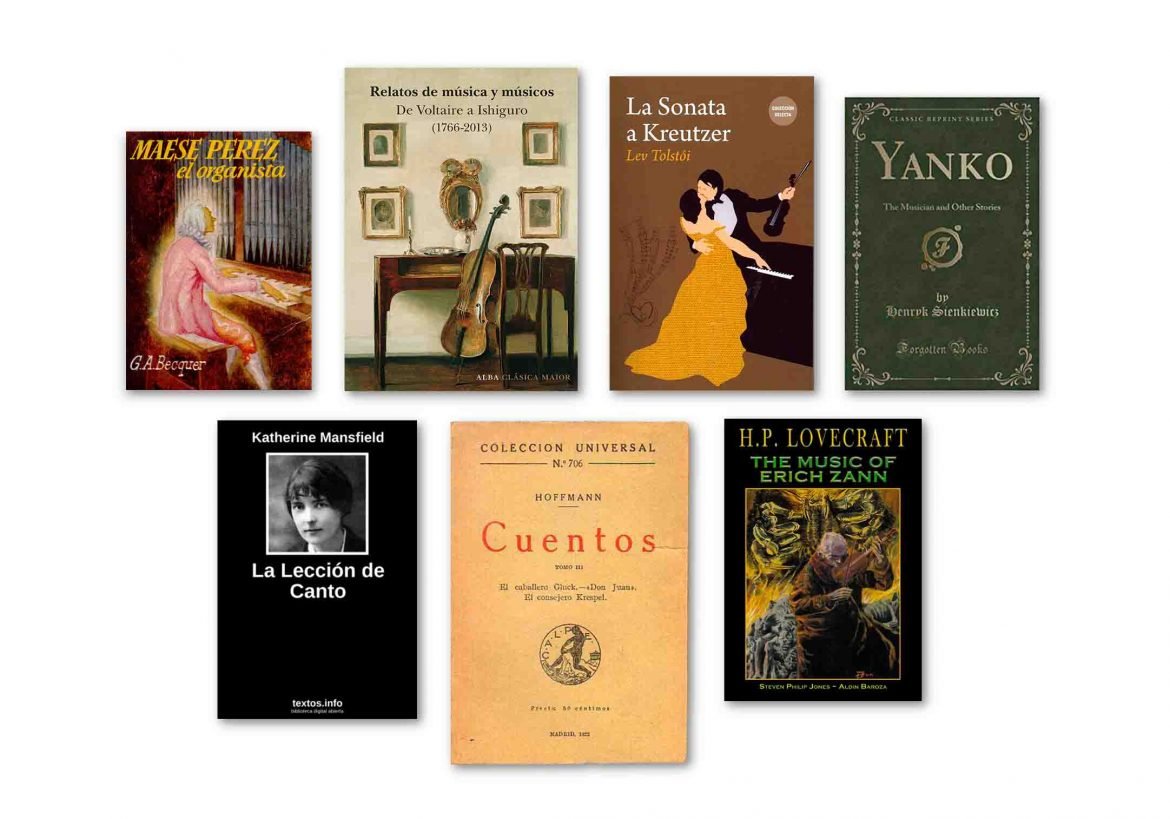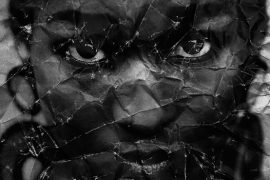“When music is literature, it’s bad literature. Music begins where words end. What happens when the music ceases? The silence. All other arts aspire to the condition of music. What does music aspire to? To silence”. Julian Barnes published the story Silence in December 2001. It is one of the last works compiled in Stories of music and musicians. From Voltaire to Ishiguro (1766-2013), and without a doubt one of the most theoretical, containing possibly references to experts of the musical subject in modernity, from Schiller to Adorno. All in all, what he raises -the full realization of musical art in silence – is illustrated through the experiences of the protagonist, perfectly aware of the inadequacy of words and musical art, as Leonard Bernstein pointed out, by saying that “only artists they can explain magic”, and they do so precisely by creating. If we talk about music, he considers, “the only way to really say something about music is by writing music”.
Certainly, we cannot know what music means, but instead we understand, and unequivocally, what it arouses
The unsuccessful effort to put words or find appropriate expressions to music has led to endless musicological debates well into the twentieth century. And yet, this theoretical impossibility is something that fiction, through more or less invented stories – and, therefore, through the use of a parabolic style – explodes and comes to communicate. Certainly, we cannot know what music means, but instead we understand, and unequivocally, what it arouses, insofar as we feel it. The reader, immersed in that other world, apprehends -as if it was his own- the musical experience the characters -whether they are composers, interpreters or mere listeners- associating facts and feelings with that sound discourse that, without meaning anything a priori, accompanies and modulates their moods.
This emotional oscillation, musically induced, is expressed in a masterly way in The Singing Lesson, by Katherine Mansfield. In the story, the music teacher, who has just received terrible news, makes her students sing mournful melodies; melodies that are miraculously transformed into a joyful tune upon learning that this news was, actually, a misunderstanding. The plot is simple, almost naive, but the merit of the narrative -which captures the attention of the reader and provokes empathy- resides in the internal monologue of the protagonist: the emotional affection is interposed in counterpoint with the external reality -the musical one- which is shared with the students. Without knowing it, or understanding hardly anything, those students unfold the soundtrack of the intimate life of their teacher.
The Waltz, by the irreverent Dorothy Parker, also employs this resource – that kind of internal voice, maximally subjective- in a very funny way. The protagonist agrees to dance with a stranger, against her will; she will suffer footfalls and all kinds of mishaps, which she comments internally, and to which the reader has access, but not the one who is responsible for them. An abyss opens up -and hence the humour- between her perfectly polite attitude toward him and the slander she shares with the reader. As we suggested, the participation of the others’ affections -when entering, fully, in their psychic world- is not the work of music itself, but of the narrative that incorporates it: it adds to the plot a common support, which allows the reader empathize through the attentive listening -the inner reading, our interpretation – of what happens to the other selves.
THE MUSICAL RAPTURE: FROM THE DEMONIC TO THE CELESTIAL SPHERE
The passionate nature of music -the rapture it promotes- is not something that modernity has discovered, since obviously the archaic civilizations already granted a fundamental role in religious ceremonies and rites, being Orfeo -for example- one of the most representative of the transport that it propitiates, of its capacity to move all beings and even to overcome death. This power will is also pointed out in one of the first narrations compiled in the volume that we recommend, having been in its day collected by Jacob and Wilhelm Grimm from popular sources. We are talking about The children of Hamelin, in which a flutist trained to free rats of Hamelin, not being paid for his services, takes the children thanks to the music.
Back, however, to the series of stories that in the nearest centuries have been written about that power, the story Janko, the musician, written by Henryk Sienkiewicz in 1879 is a extremely sad one. A tale starred by a fragile being who is endowed, however, with a special ability to perceive music in all the surrounding phenomena (“the mother could not take him to the church because when the organ began to sound or the chorus started a song with a sweet voice, the boy’s eyes were covered by fog and it seemed that he looked from the other world”). The boy succumbs as a consequence of his uncontrollable passion, in this case centred in the acquisition of a violin.
That string instrument has starred in some of the most incredible and dramatic stories about music, among which we must also highlight The violin of Rothschild, by Anton Chekhov. In one sense or another, many authors have highlighted the demonic aspect of music, the possession or rapture that awakens, inspired by archaic myths or myths from their own time. One just needs to think of a Paganini, a living myth. In this sense, Lev Tolstoi illustrated in his Kreutzer Sonata the power of seduction inherent in music, as well as the communion of souls that occurs through interpretation.
“The interpreter was sweating an ocean and writhing like a monkey. In his rampant music one could almost see the vague silhouette of satyrs and maenads dancing and circling madly through boiling chasms, clouds, fumes and lightning”
Rather creepy, on the other hand, is the story of Howard Phillips Lovecraft entitled The music of Erich Zann. A music that the protagonist remembers having witnessed in the apartment of a street that strangely cannot find, music played by the viola of a mute individual and inexplicable behaviour, which acts as possessed: “Increasingly stronger, more and more frantic, the intensity of the squeaks and cries of that desperate viola did not stop growing. The interpreter was sweating an ocean and writhing like a monkey (…) In his unbridled music I could almost see the vague silhouette of satyrs and maenads dancing and spinning like crazy through boiling chasms, clouds, smoke and lightning”.
The enigmatic aspect of music can also show a celestial aspect -still in “rapture” mode- for example in Maese Pérez, the organist, a story by Gustavo Adolfo Bécquer: “from each of the notes that made that magnificent chord a theme was developed, and some near, others far away, these brilliant, those deaf, it would be said that the waters and the birds, the breezes and the fronds, the men and the angels, the earth and the heavens, each sang in their language a hymn at birth From Salvador”.
E. T. A. HOFFMANN, MASTER OF FANTASY
Certainly, if we have to mention a single author who stands out for his fantasy when making plots about music, Ernst Theodor Amadeus Hoffmann is our man, he who changed his third original name (Wilhelm) for Mozart’s second, due to the devotion he felt towards him, and which he demonstrated, for example, in a fantasy dedicated to the favourite opera of the generation of the early Romanticism: “Don Juan”. Fabulous adventure happened to an enthusiastic traveller. In addition, he wrote such sinister and magisterial accounts as The Sandman, he was a composer and wrote reviews, attending premieres of some of Beethoven’s symphonies. As if that were not enough, a fictitious character – Johannes Kreisler – who would be his musical alter ego was created by him. Gustav Mahler read and reread Hoffmann, claiming that “he has written about music with greater intelligence than anyone else”.
Let’s finish, thus, by mentioning the story of this author that is included in the valuable volume that inspires our post. It is entitled The Counselor Krespel, and in a passage the protagonist seems to question the reader, somehow alerted by his disbelief: “laugh at me if you wish, this dead object [the violin] to which only I give life and sound, speaks to me often in a very strange way, and when I first played it, I felt as if I were the only magnetizer capable of waking up that somnambulist, telling me loudly what is in its inside”. This comes from a 1818 story, published therefore 200 years ago, but because of its particular way of transferring musical alchemy -which so imperiously conditions moods, awakening unexpected affects in humans- its power is conserved intact.
Featured image: From left to right and from top to bottom: Maese Pérez, el organista de Gustavo Adolfo Béquer, Relatos de música y músicos de Voltaire A. Ishiguro, La sonata a Kreutzer de Lev Tolsói, Yanko el músico de Henryk Sienkiewicz, La lección de canto de Katherine Mansfield, El consejero Krespel de Hoffmann, La música de Erick Zann de H. P. Lovecraft





















